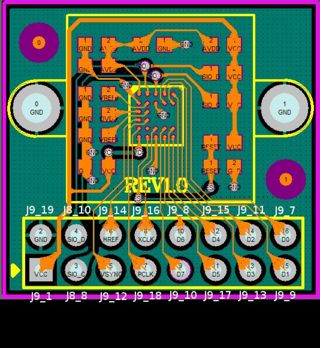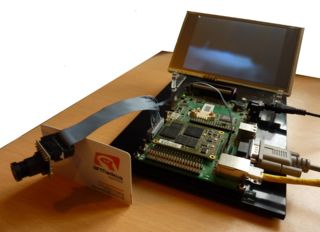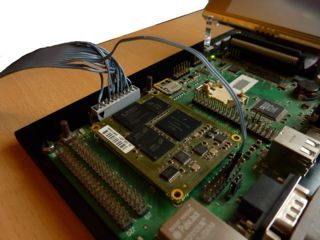OV7670
From ArmadeusWiki
Available commercial modules:
Contents
Connecting the Elechouse module to the APF27
Description
- OV7670 normally needs a 1,8V logic core voltage and an I/O Voltage >= 2,5V, but the modules don't care about 1,8V... Strange but it seems to work... Sensor main power supply is then taken from J9 pin 1 (2,5V)
- Montage is straightforward, only a special cable is needed (or single wires):
- CSI port (8 bits data + 4 bits control signals) is used to transmit images. These signals are available on the APF27Dev J9 connector (2,5V logic).
- I2C bus (SIO) is used to configure the sensor. This 2 pins bus is available on the APF27Dev J8 connector.
Montage
Kernel config
- Done by default on APF27
$ make linux-menuconfig
Device Drivers --->
Multimedia devices --->
[*] Video capture adapters --->
...
<M> SoC camera support
...
<M> ov7670 camera support
...
Usage
# modprobe mx27_camera Linux video capture interface: v2.00 mx27-camera mx27-camera.0: initialising mx27-camera mx27-camera.0: Camera clock frequency: 33250006 mx27-camera mx27-camera.0: Using EMMA # modprobe ov7670_soc OmniVision ov7670 sensor driver, at your service camera 0-0: Camera driver attached to camera 0 mx27-camera mx27-camera.0: mclk_get_divisor not implemented. Running at max speed ov7670 0-0021: initializing ov7670 0-0021: found an 0V7670 sensor camera 0-0: Camera driver detached from camera 0
Test
# capture --cam_width 640 --cam_height 480 --width 640 --height 480 &


